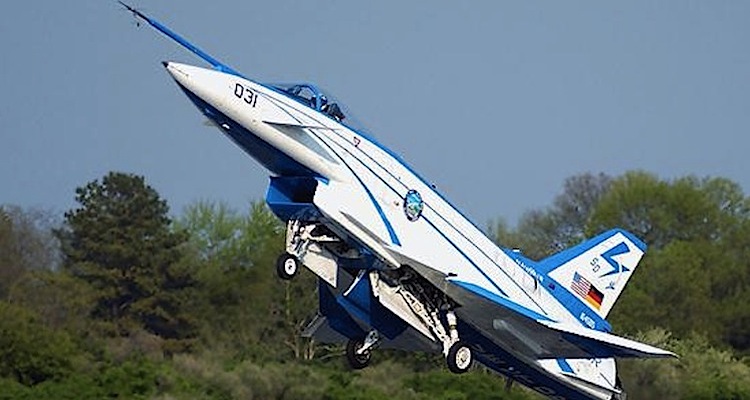The X-31 was an unarmed research ship that resembled a fighter. It emerged from experience over North Vietnam where nimble, Soviet-built MiG-17s out-turned American fighters like the F-4 Phantom II. Developed by America’s Rockwell International and Germany’s Messerschmitt-Bölkow-Blohm, the two X-31s tested thrust vectoring—aiming engine exhaust in different directions—that would enable warplanes to maneuver as never before. The pilot could make tight turns and point his nose (which would have guns, on a fighter version) at targets quickly and abruptly. The X-31 could even fly in one direction while pointing and shooting in another—what is known as flight path decoupling.
The first X-31 made its maiden flight at Palmdale, Calif., on October 11, 1990, the second on January 19, 1991. A goal was achieved when an X-31 first flew at a 70-degree angle of attack on September 18, 1992. Thrust-vectored X-31s dazzled observers with their ability to fly at strange angles and perform unorthodox maneuvers. At the 1995 Paris Air Show, an X-31 literally flew backwards above the crowd.
The U.S. Navy and Defense Advanced Research Projects Agency (DARPA) managed the program from 1990 to 1995. Each X-31 was powered by a single General Electric F404-GE-400 turbojet. At the plane’s tail were three-vane, thrust-vectoring carbon-fiber paddles, described by Navy test pilot Commander Al Grove as “the aircraft’s visible technological masterpiece.”
After the two X-31s completed 580 flights, the first ship crashed on January 19, 1995, though the pilot ejected safely. The second aircraft was retired for several years, flew again and is now on display at Deutsches Museum Flugwerft Schleissheim, near Munich.





